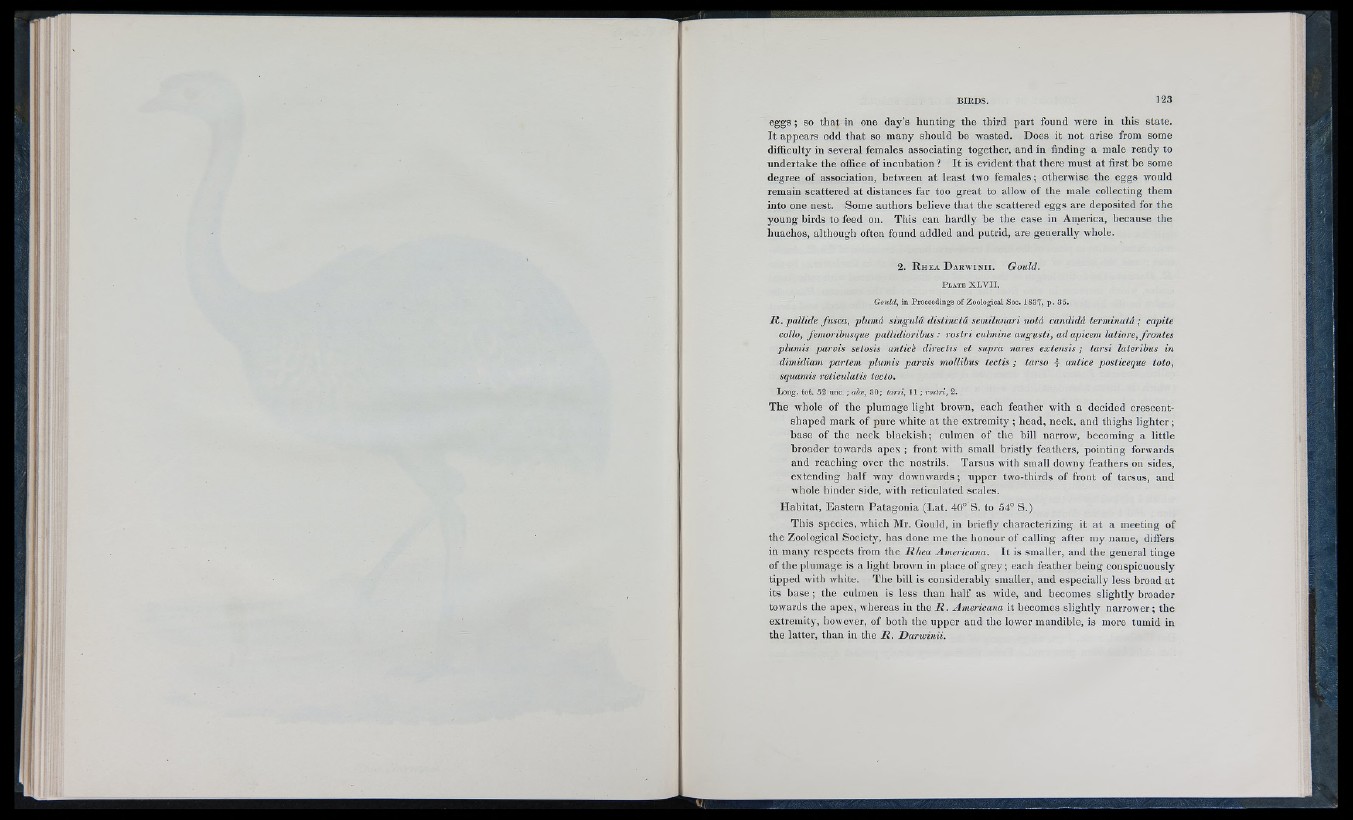
e g g s ; so that in one day’s hunting the third part found were in this state.
It appears odd that so many should be wasted. Does it not arise from some
difficulty in several females associating together, and in finding a male ready to
undertake the office of incubation ? It is evident that there must at first be some
degree of association, between at least two females; otherwise the eggs would
remain scattered at distances far too great to allow of the male collecting them
into one nest. Some authors believe that the scattered eggs are deposited for the
young birds to feed ou. This can hardly be the case in America, because the
huachos, although often found addled and putrid, are generally whole.
2 . R h e a D a r w in i i . Gould.
P l a t e XLV II.
of Zoological Gould, in Soc. 1837, p. 85.
R . pallide fusca, plumâ singulá distinctâ semilunari notâ candida terminatâ; capite
eolio, femoribusque pallidiorihus : rostri culmine angustí, adapicem latiere, frontes
plumis parvis selosis anticè direcHs et supra nares extensis ; tarsi lateribus in
dimidiam partem plumis parvis inollibus tectis ; tarso | antice posticeque toto,
squamis reticulatis tecto.
Long. tot. 52 unc. ; aloe, 30; tarsi, 11 ; rostri, 2.
The whole of the plumage light brown, each feather with a decided crescent-
shaped mark of pure v'hite at the extremity ; head, neck, and thighs lighter;
base of the neck blackish; culmen of the bill narrow, becoming a little
broader towards apex ; front with small bristly feathers, pointing forwards
and reaclhng over the nostrils. Tarsus with small downy feathers on sides,
extending half way downwards ; upper two-thirds of front of tarsus, and
whole hinder side, with reticulated scales.
Habitat, Eastern Patagonia (Lat. 40° S. to 54° S.)
This species, vdiich Mr. Gould, in briefly characterizing it at a meeting of
the Zoological Society, has done me the honour of calling after ray name, differs
in many respects from the Rhea Americana. It is smaller, and the general tinge
of the plumage is a light brown in place of grey ; each feather being conspicuously
tipped with white. The bill is considerably smaller, and especially less broad at
its base ; the culmen is less tlian half as wide, and becomes slightly broader
towards the apex, whereas in the R . Americana it becomes slightly narrower ; the
extremity, however, of both the upper and the lower mandible, is more tumid in
the latter, than in the R . Darwinii.